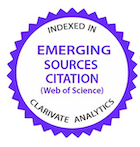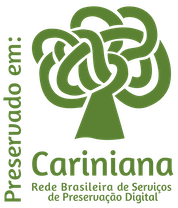Efeitos de estratégias de alimentação mista com diferentes relações de energia:proteína para juvenis de tilápia-do-Nilo (Oreochromis niloticus)
DOI:
https://doi.org/10.1590/1809-6891v24e-74420EResumo
A avaliação das estratégias de alimentação é necessária para garantir a sustentabilidade da aquicultura. Este estudo avaliou o efeito de duas dietas com diferentes proporções de E:P (9,6 e 10,3 kcal de energia digestível por grama de proteína bruta) para juvenis de tilápia do Nilo. Foram avaliados o crescimento, uso da dieta e nutrientes, parâmetros econômicos, composição corporal e esteatose hepática de peixes. Não houve efeito significativo dos tratamentos sobre o crescimento, consumo de ração, conversão alimentar, uniformidade e sobrevivência dos peixes. O menor custo de ração (P>0,05) por biomassa ou 1000 unidades produzidas foi registrado nos juvenis de tilápia do Nilo alimentados com a dieta 10,3 kcal DE/g PB por sete dias. A contribuição do extrato etéreo no ganho de peso dos peixes foi reduzida (P=0,055) pela maior utilização da dieta 10,3 kcal DE/g PB nas estratégias de alimentação utilizadas. A mesma tendência foi observada nos níveis de lipídios corporais em peixes. Os índices corporais foram semelhantes (P>0,05) entre os peixes dos diferentes tratamentos. A mistura de dietas com diferentes relações E:P em um protocolo de alimentação semanal não prejudica o desempenho produtivo de juvenis de tilápia do Nilo. No entanto, considerando os custos de alimentação, a recomendação é fornecer uma dieta com 33% PB e 3,4 kcal/DE por sete dias por semana.
Palavras-chave: manejo alimentar; desempenho produtivo; nutrição de peixes; aquicultura
Downloads
Referências
Lovell R. Diet and fish husbandry – Salmonids. In: Halver JE, Hardy RE. Fish Nutrition. 3nd ed. California: Academic Press-Elsevier Science; 2002. p. 720-732. Available from: https://www.agrifs.ir/sites/default/files/Fish%20Nutrition.pdf
Santos MM, Calumby JA, Filho PAC, Soares EC, Gentelini AL. Nível de arraçoamento e frequência alimentar no desempenho de alevinos de tilápia-do-Nilo. [Feeding level and feeding frequency on Nile tilapia fingerling performance]. Boletim do Instituto da Pesca, 2015; 41(2): 387-395. Available from: https://doi.org/ 10.4025/actascianimsci.v31i4.6300. Portuguese.
Leonardo FA, Baccarin AE, Filho JDS, Scorvo CMDF. Custo de produção tilapia-do-Nilo (Oreochromis niloticus) e pacu (Piaractus mesopotamicus) no vale do Ribeira, Estado de São Paulo. [Production cost of nile tilapia (Oreochromis niloticus) and pacu (Piaractus mesopotamicus) in vale do ribeira, state of São Paulo]. Informações Econômicas, 2018; 48(1): 21-33. Portuguese.
Huang Q, Huang K, Ma Y, Qin X, Wen Y, Sun L, Tang L. Feeding frequency and rate effects on growth and physiology of juvenile genetically improved farmed Nile tilapia. North American Journal of Aquaculture, 2015; 77(4): 503-512. Available from: https://doi.org/10.1080/15222055.2015.1066472
Abdel-Tawwab M, Khattab YAE, Ahmad MH, Shalaby AME. Compensatory growth, feed utilization, whole-body composition, and hematological changes in starved Juvenile Nile tilapia, Oreochromis niloticus (L.). Journal of Applied Aquaculture. 2008; 18 (3): 17–36. Available from: https://doi.org/10.1300/J028v18n03_02
Ali M, Nicieza A, Wootton RJ. Compensatory growth in fishes: a response to growth depression. Fish and Fisheries. 2003; 4(2): 147-190. Available from:https://doi.org/10.1046/j.1467-2979.2003.00120.x
Myszkowski L. Compensatory growth, condition and food utilization in barbel Barbus barbus juveniles reared at different feeding periodicities with a dry diet. Journal of Fish Biology, 2013; 82(1): 347–353. Available from: https://doi.org/10.1111/j.1095-8649.2012.03482.x
Takahashi LS, Biller JD, Criscuolo-Urbinati E, Urbinati EC. Feeding strategy with alternate fasting and refeeding: effects on farmed pacu production. Journal of Animal Physiology and Animal Nutrition, 2011; 95(2): 259-266. Available from: https://doi.org/10.1111/j.1439-0396.2010.01050.x
Yarmohammadi M, Shabani A, Pourkazemi M, Soltanloo H, Imanpour MR, Ramezanpour S, Smith-Keune C, Jerry DR. Effects of starvation and re-feeding on compensatory growth performance, plasma metabolites and IGF-I gene expression of Persian sturgeon (Acipenser persicus, Borodin 1897). Iranian Journal of Fisheries Sciences, 2013; 12(2): 465- 483. Available from: http://jifro.ir/article-1-1003-en.html
Cho SH, Heo TY. Effect of dietary nutrient composition on compensatory growth of juvenile olive flounder Paralichthys olivaceus using different feeding regimes. Aquaculture nutrition, 2011; 17(1): 90-97. Available from: https://doi.org/10.1111/j.1365-2095.2010.00788.x
Gibson T, Gatlin GDM. Dietary protein and energy modifications to maximize compensatory growth of channel catfish (Ictalurus punctatus). Aquaculture, 2001; 194(3-4): 337-348. Available from: https://doi.org/10.1016/S0044-8486(00)00523-8
Sardar P, Sinha A, Datta S. Effect of mixed feeding schedules with varying dietary protein levels on the growth performances of common carp (Cyprinus carpio Linn.).Indian Journal of Animal Sciences, 2011; 81(5): 105–110.
Dong GF, Yang YO, Yao F, Wan Q, Yu L, Zhou JC, Li Y. Response Of Yellow catfish (Pelteobagrus fulvidraco Richardson) to low-protein diets and subsequent recovery. Aquaculture Nutrition. 2013; 19(3): 430-439. Available from: https://doi.org/10.1111/j.1365-2095.2012.00978
NRC,National Research Council. Nutrients requirements of fish and shrimp. Washington: The National Academies Press; 2011.
Furuya WM, Pezzato LE, Barros MM, Boscolo WR, Cyrino JEP, Furuya VRB, Feiden A. Tabelas brasileiras para nutrição de tilápias.Toledo: GFM; 2010. 100p. Portuguese. Available from: https://www.academia.edu/8857270/Tabelas_Brasileiras_para_a_Nutri%C3%A7%C3%A3o_de_Til%C3%A1pias
Azaza MS, Khiari N, Dhraief MN, Aloui N, Kraïem MM, Elfeki A. Growth performance, oxidative stress indices and hepatic carbohydrate metabolic enzymes activities of juvenile Nile tilapia, Oreochromis niloticus L., in response to dietary starch to protein ratios. Aquaculture Research, 2015; 46(1): 14-27. Available from: https://doi.org/10.1111/are.12153
American Public Health Association - APHA. Standard Methods for the Examination of Water and WasteWater. 22nd Edition, American Public Health Association, American Water Works Association, Water Environment Federation, 2012.
Furuya WM, Souza SR, Furuya VRB, Hayashi C, Ribeiro RP. Dietas peletizada e extrusada para machos revertidos de tilápias do Nilo (Oreochromis niloticus L.), na fase de terminação. Ciência Rural, 1998; 28(3): 482–487. Available from: https://doi.org/10.1590/S0103-84781998000300022
Sandre LCG, Buzollo H, Nascimento TMT, Neira LM, Jomori RK, Carneiro DJ. Productive performance and digestibility in the initial growth phase of tambaqui (Colossoma macropomum) fed diets with different carbohydrate and lipid levels. Aquaculture Reports, 2017; 6: 28-34. Available from: https://doi.org/10.1016/j.aqrep.2017.02.003
Oliveira-Júnior JCD, Aguiar GACC, Carneiro CLS, Ladeira ALF, Campelo DAV, Furuya WM, Santos FAC, Zuanon JAS, Luz RK, Salaro AL. Effects of different ratios of crude protein and non-fibrous carbohydrates on growth, metabolism, physiology, nutrient utilization and muscle cellularity of Lophiosilurus alexandri, a carnivorous freshwater fish. Aquaculture, 2021; 540: 736685. Available from: https://doi.org/10.1016/j.aquaculture.2021.736685
Mandarim-de-Lacerda CA. Stereological tools in biomedical research. Biomedical and Medical Sciences, 2003; 75(4): 469–486. Available from: https://doi.org/10.1590/S0001-37652003000400006
Association of Official Analytical Chemists - AOAC. Official Methods of Analysis. 15th edition .Arlington, Virginia, USA: Association of Official Analytical Chemists, Inc.v.1,1990.
Durigon EG, Lazzari R, Uczay J, Lopes DLA, Jerônimo G T, Sgnaulin T, Emerenciano M G C. Biofloc technology (BFT): Adjusting the levels digestible protein and digestible energy in diets of Nile tilapia juveniles raised in brackish water. Aquaculture and Fisheries, 2019; 5(1): 42-51. Available from: https://doi.org/10.1016/j.aaf.2019.07.001
Sgnaulin T, Durigon EG, Pinho SM, Jerônimo GT, Lopes DLA, Emerenciano MGC. Nutrition of genetically improved farmed tilapia (GIFT) in biofloc technology system: Optimization of digestible protein and digestible energy levels during nursery phase. Aquaculture, 2020; 521: 734998. Available from: https://doi.org/10.1016/j.aquaculture.2020.734998
Montanhini Neto, R., Ostrensky, A. Evaluation of commercial feeds intended for the Brazilian production of Nile tilapia (Oreochromis niloticus L.): nutritional and environmental implications. Aquaculture Nutrition, 2015, 21(3): 311-320. Available from: https://doi.org/10.1111/anu.12154
Saravanan S,Geurden I, Figueiredo-Silva AC, Kaushik SJ, Haidar MN, Verreth JAJ, Schrama JW. Control of voluntary feed intake in fish: A role for dietary oxygen demand in Nile tilapia (Oreochromis niloticus) fed diets with different macronutrient profiles. British Journal of Nutrition, 2012; 108(8): 1519–1529. Available from: https://doi.org/10.1017/S0007114511006842
Tran-Duy A, Smit B, Vandam AA, Schram JW. Effects of dietary starch and energy levels on maximum feed intake, growth and metabolism of Nile tilapia, Oreochromis niloticus. Aquaculture,2008; 277(3–4): 213–219. Available from: https://doi.org/10.1016/j.aquaculture.2008.03.004
Haidar MN, Bleeker S, Heinsbroek LTN, Schrama JW. Effect of constant digestible protein intake and varying digestible energy levels on energy and protein utilization in Nile tilapia. Aquaculture, 2018; 489: 28–35. Available from: https://doi.org/10.1016/j.aquaculture.2017.12.035
Azaza MS, Dhraïef MN, Kraïem MM. Effects of water temperature on growth and sex ratio of juvenile Nile tilapia Oreochromis niloticus (Linnaeus) reared in geothermal waters in southern Tunisia. Journal of Thermal Biology. 2008; 33(2): 98-105. Available from: https://doi.org/10.1016/j.jtherbio.2007.05.007
Santos VB, Mareco EA, Silva MDP. Growth curves of Nile tilapia (Oreochromis niloticus) strains cultivated at different temperatures. Acta Scientiarum - Animal Sciences, 2013; 35(3): 235–242. Available from: https://doi.org/10.4025/actascianimsci.v35i3.19443
Dai YJ, Cao XF, Zhang DD, Li XF, Liu WB, Jiang GZ. Chronic inflammation is a key to inducing liver injury in blunt snout bream (Megalobrama amblycephala) fed with high-fat diet. Developmental and Comparative Immunology. 2019; 97: 28–37. Available from: http://dx.doi.org/10.1016/j.dci.2019.03.009
Xu F, Xu C, Xiao S, Lu M, Limbu SM, Wang X.Effects of α-lipoic acid on growth performance, body composition, antioxidant profile and lipid metabolism of the GIFT tilapia (Oreochromis Niloticus) fed high-fat diets. Aquaculture Nutrition, 2019; 25(3): 585–596. Available from: https://doi.org/10.1111/anu.12881
Caballero MJ, Kjørsvik E, Fernandez AJ, Rosenlund G. Histological alterations in the liver of sea bream, Sparus aurata L., caused by short-orlong-term feeding with vegetable oils. Recovery of normal morphology after feeding fish oil as the sole lipid source. Journal of Fish Diseases. 2004; 27(9): 531-541. Available from: https://doi.org/10.1111/j.1365-2761.2004.00572.x
Wang XX, Chen MY, Wang K, Ye, JD. Growth and metabolic responses in Nile tilapia (Oreochromis niloticus) subjected to varied starch and protein levels of diets. Italian Journal of Animal Science, 2017; 16: 308–316. Available from: https://doi.org/10.1080/1828051X.2016.1275953
Chen YJ, Wang XY, Pi RR, Feng JY, Luo L, Lin SM, Wang DS. Preproinsulin expression, insulin release, and hepatic glucose metabolism after a glucose load in the omnivorous GIFT tilapia Oreochromis niloticus. Aquaculture. 2018; 482: 183–19.
Feng JY, Chen JX, Luo L, Lin SM, Chen YJ, Wang DS. Molecular and metabolic adaption of glucose metabolism in the red and white muscle of the omnivorous GIFT tilapia Oreochromis niloticus to a glucose load. General and Comparative Endocrinology, 2019; 277: 82–89. Available from: https://doi.org/10.1016/j.ygcen.2019.03.010.
Downloads
Publicado
Como Citar
Edição
Seção
Licença
Copyright (c) 2023 Ciência Animal Brasileira / Brazilian Animal Science

Este trabalho está licenciado sob uma licença Creative Commons Attribution 4.0 International License.
Autores que publicam nesta revista concordam com os seguintes termos:
- Autores mantém os direitos autorais e concedem à revista o direito de primeira publicação, com o trabalho simultaneamente licenciado sob a Licença Creative Commons Attribution que permite o compartilhamento do trabalho com reconhecimento da autoria e publicação inicial nesta revista.
- Autores têm autorização para assumir contratos adicionais separadamente, para distribuição não-exclusiva da versão do trabalho publicada nesta revista (ex.: publicar em repositório institucional ou como capítulo de livro), com reconhecimento de autoria e publicação inicial nesta revista.
- Autores têm permissão e são estimulados a publicar e distribuir seu trabalho online (ex.: em repositórios institucionais ou na sua página pessoal) a qualquer ponto antes ou durante o processo editorial, já que isso pode gerar alterações produtivas, bem como aumentar o impacto e a citação do trabalho publicado (Veja O Efeito do Acesso Livre).






























